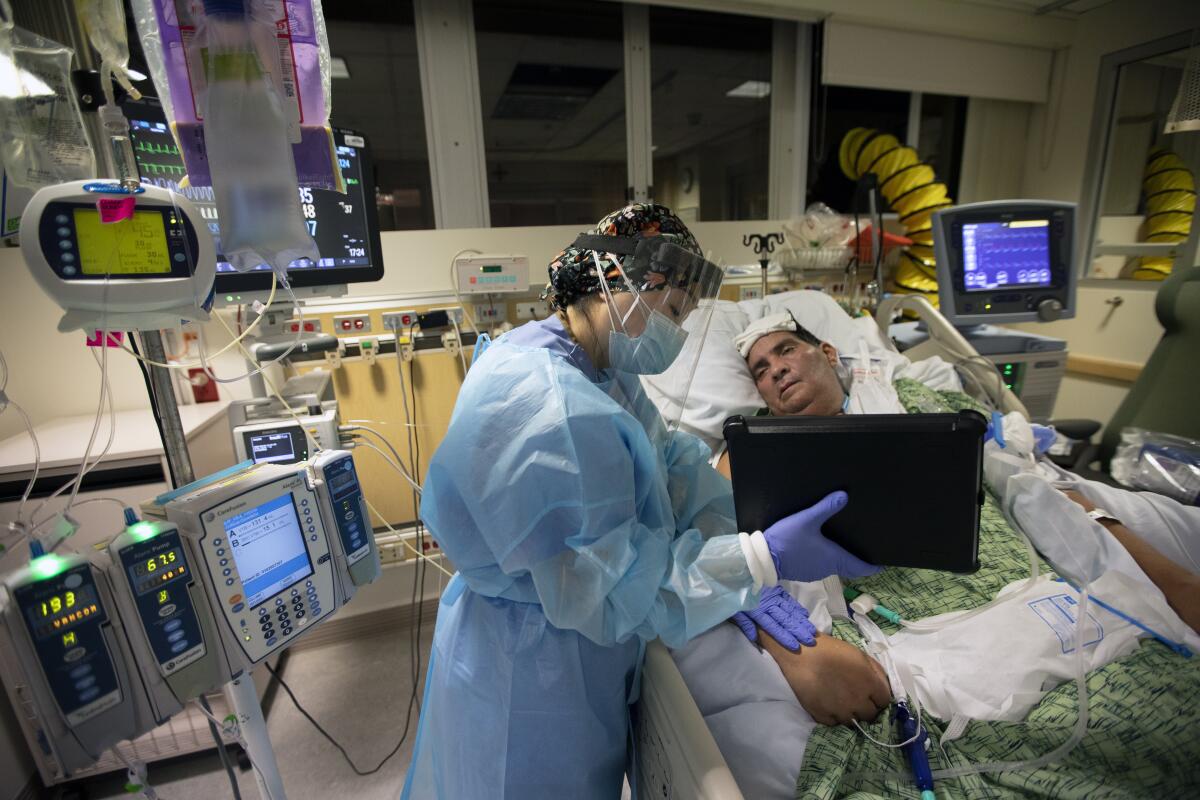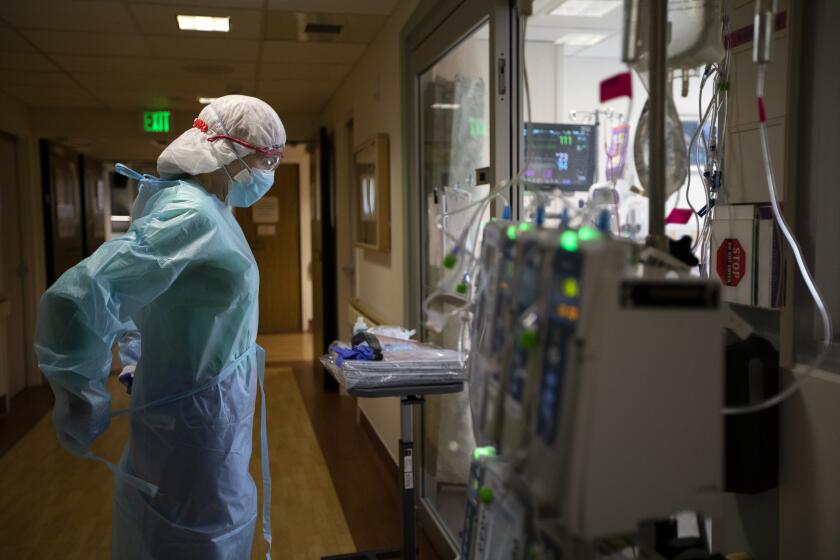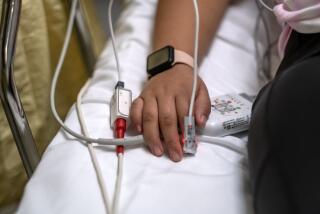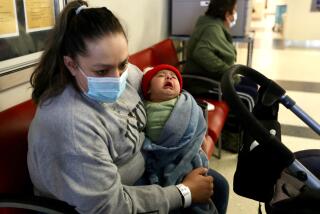Oxygen supply shortages bedevil hospitals already overwhelmed by COVID-19 patients

- Share via
One of the myriad challenges facing Southern California’s medical system, which is overwhelmed by COVID-19 patients, involves one of the most basic staples of any hospital.
Oxygen.
Officials are having problems getting the amount of oxygen needed by critically ill COVID-19 patients who are struggling to breathe as their inflamed lungs are being damaged or destroyed.
Problems on Sunday caused at least five hospitals in L.A. County to declare an internal disaster, which closed the facilities to all ambulance traffic — not just certain types of ambulance patients, as is more typical.
It’s not simply a shortage of oxygen itself, county and hospital officials say. There’s a shortage of canisters, which patients need to return home, and aging hospital pipes are breaking down due to the huge amounts of oxygen needed to be distributed around the hospital.
There are two problems with the distribution of oxygen at aging hospitals.
First, there are so many patients needing a high rate of oxygen that the system cannot maintain the sufficient pressure needed in the pipes.
The second is that there is such high flow through the pipes that they freeze, “and obviously, if it freezes, then you can’t have good flow of oxygen,” said Dr. Christina Ghaly, L.A. County health services director.
Some hospitals are forced to move patients to lower floors, because it’s easier to deliver oxygen there without needing the pressure to push it up to higher floors, Ghaly said.
Memorial Hospital of Gardena is one of the centers facing oxygen issues. Chief Executive Kevan Metcalfe said the hospital has run low on oxygen.
If it runs out, the hospital would be in “deep, deep trouble,” he said.
Doctors and nurses have learned since the early days of the pandemic to, as much as possible, avoid placing patients on ventilators, which involves sticking a breathing tube down the throat.
Many patients instead receive a high-flow oxygen treatment, in which oxygen is sent through plastic tubes placed in the nose.
While a non-COVID patient may receive six liters of oxygen per minute, COVID-19 patients need 60 to 80 liters a minute. So now, hospitals need far more oxygen than they did before.
One of the biggest concerns facing hospitals is that more patients are on the way.
The COVID-19 patients in the hospital now reflect coronavirus cases diagnosed two weeks earlier — a time at which L.A. County was averaging 11,000 new cases a day. That number has swelled since then — up to nearly 14,800 new cases a day for the seven-day period that ended Dec. 22 — before declining slightly to 14,000 cases a day as of Monday night.
That means hospitals are still expecting to see increasing demand into the new year because of infections that took place before Christmas. About 10% of people who test positive for the coronavirus in L.A. County end up needing hospital treatment.
Barbara Ferrer, L.A. County‘s public health director, said “all indicators tell us that our situation may only get worse as we begin 2021. The rate of community transmission remains extraordinarily high…. As cases continue to remain at these alarmingly high levels, hundreds more people are likely to die.”
She added: “We all need to give our hospitals a fighting chance to handle the flood of COVID-19 patients that are arriving every single day.”
The pace of the fall and winter surge has been staggering. On Nov. 1, L.A. County was averaging about 1,300 coronavirus cases a day on a weekly basis; L.A. County is now averaging 14,000 cases a day. The daily rate at which coronavirus test results are coming back positive is now 17% in L.A. County, more than quadruple the comparable figure Nov. 1, when the positivity rate was less than 4%.
L.A. County is now averaging about 90 COVID-19 deaths a day over the last week, one of the highest such numbers during the pandemic. The county death toll as of Monday night was 9,564, according to an independent Times count of local health jurisdictions; Ferrer said Monday that her agency is still sorting through a reporting backlog and it expects to add 432 deaths, pushing the death toll closer to 10,000.
County Supervisor Hilda Solis urged people against thinking that nothing could be done about the pandemic, and she asked people to stay home. A coronavirus test that shows up negative can easily become meaningless as a person can be infected and contagious by the time the results come back.
“I understand the futility that so many people are feeling right now — the idea that some people just want to throw their hands up. But we can’t think like that,” Solis said. “It’s squarely within our control to limit how many people are infected and how many people can die.
“To be more blunt, each one of us has the power to cause or prevent death and illness among our family members, our co-workers and even strangers.”
Medical centers across California have had to resort to keeping patients on ambulances and moving some who ought to be in the ICU to other areas.
It isn’t just older people who can suffer from COVID-19, Solis said; a child this month died of the coronavirus-linked multisystem inflammatory syndrome in children, known as MIS-C, in L.A. County. There have been at least 51 cases of MIS-C in the county — all requiring hospitalization, with half treated in intensive care units. Latino children accounted for nearly three-quarters of those cases.
Ferrer said L.A. County has run 29 coronavirus samples for a genetic analysis, and none have been positive for the potentially more contagious variant of the coronavirus identified in Britain. Although there’s a high probability the variant is here, she said, it doesn’t appear to be dominant.
“Whether the variant is here or isn’t here, the steps we need to take are exactly the same,” Ferrer said.
Times staff writers Sean Greene and Colleen Shalby contributed to this report.
More to Read
Sign up for Essential California
The most important California stories and recommendations in your inbox every morning.
You may occasionally receive promotional content from the Los Angeles Times.














